
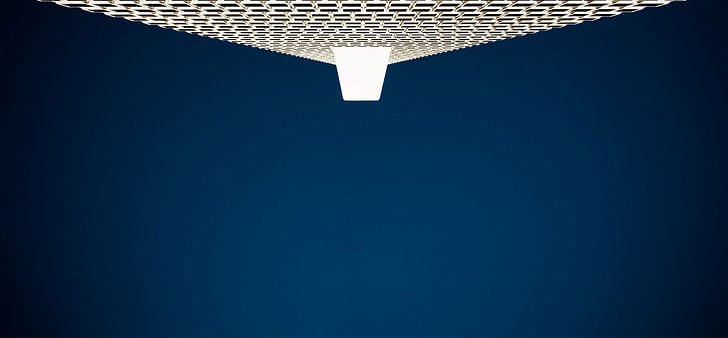
In Focus is Archinect's series of features dedicated to profiling the photographers who help make the work of architects look that much better. What has attracted them to architecture? How do they work? What type of equipment do they use? What do they think about seeing their work in blogs?
In this feature, we talk to Iranian-Canadian creative director and photographer Sam Javanrouh.
Archinect: What is your relationship with architecture? What drew you to architecture, as a photographer?
Sam Javanrouh: Architecture always fascinated me. I've been always drawn to it from when I was a kid. In fact I tried to go to architecture school in Tehran, Iran but things got complicated, and my life went another direction. Interestingly enough, architecture and architects inspire me more than any other photographer in my work. One of the first photography books that inspired me to pick up a camera was Horst Hamann's New York Vertical, which is an amazing collection of very tall photos of buildings in NY. And the works of architects like Tadao Ando, Louis Kahn, Santiago Calatrava and others are always more inspiring than any other work of art. Naturally this fascination with architecture shows in my work as a photographer.


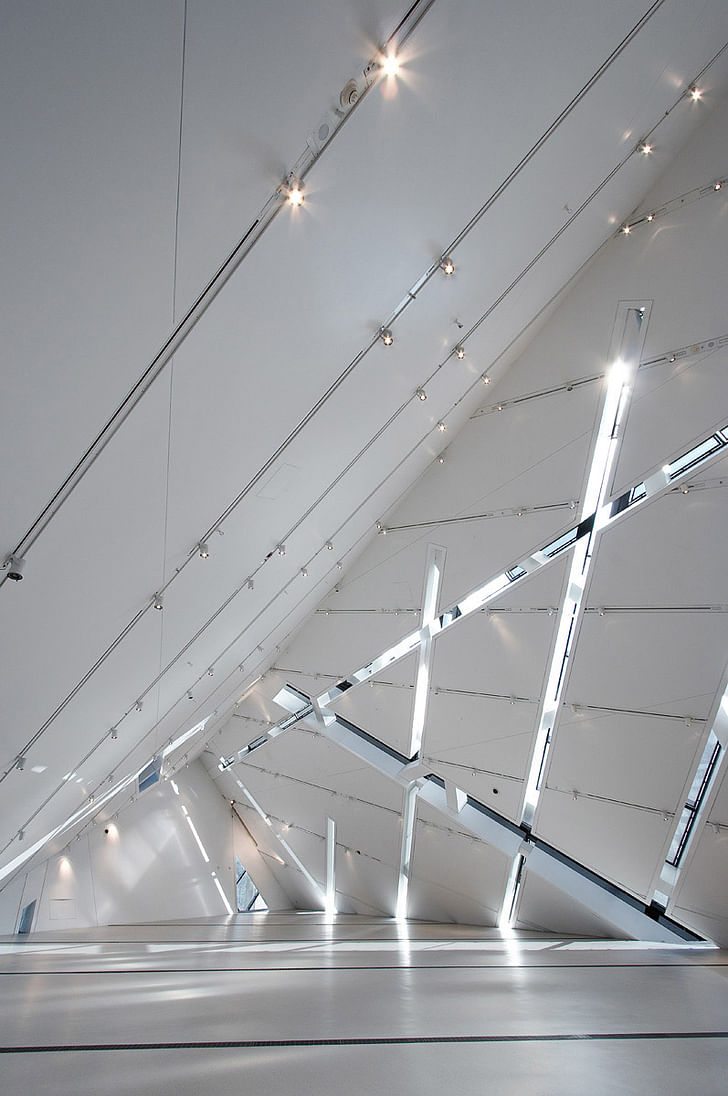
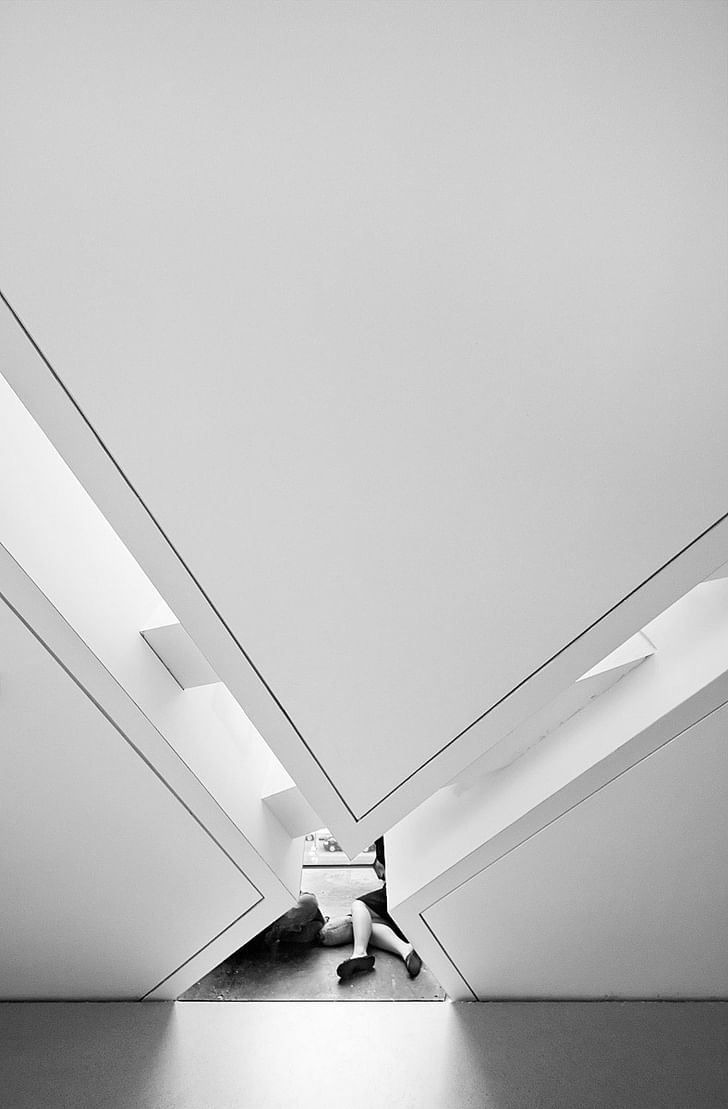

Describe how you work... who are your clients?
SJ: I'm mainly a street and urban photographer. My full-time job is a creative director at an animation and visual effects company. Photography is my second job, which means I take on photography jobs that interest me, but mostly I take photos on my own time and sell licenses to my clients. I started a photoblog in 2003, and I post one photo a day on it, and that's mostly how my clients find my work. As an example, when I took the photo of the Jumping Girl on the launch day of Daniel Libeskind's Crystal for Royal Ontario Museum and posted it on the same night, I got a call from Libeskind's Office in New York first thing the next morning, hiring me to shoot the museum on the same day! This was a big deal for me, especially since I'm a big fan of his work.
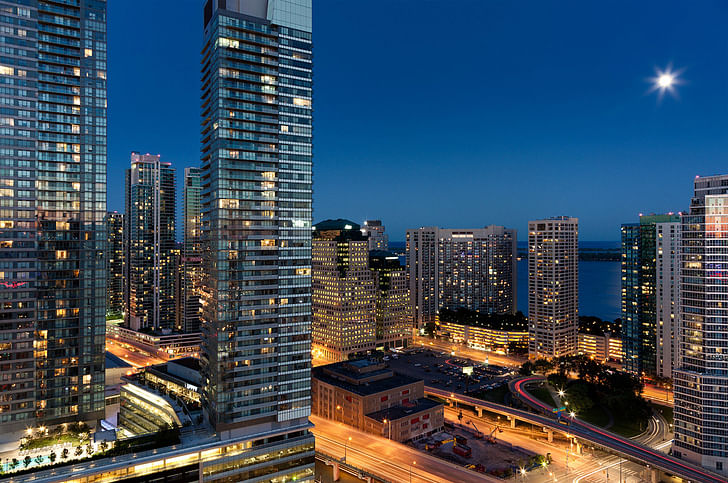

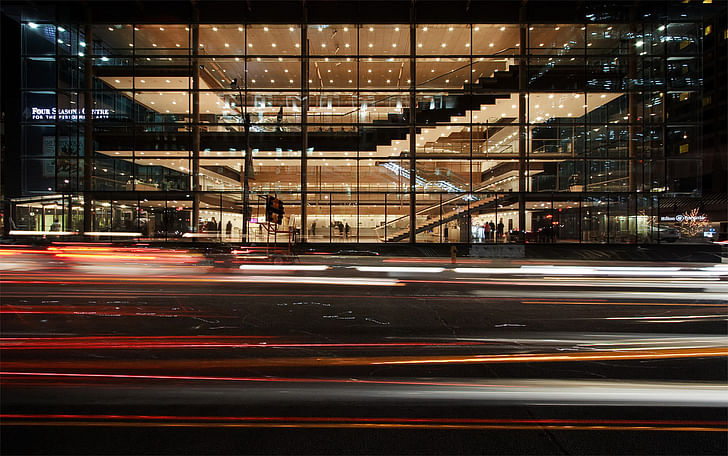
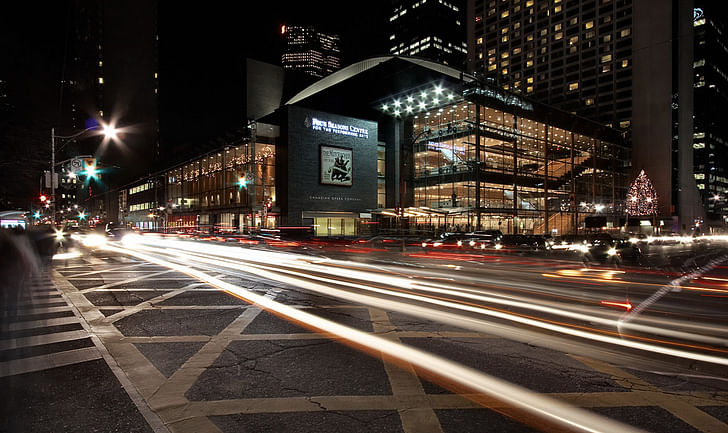
Do you mostly work in a specific region? What is your travel schedule like?
SJ: I'm mostly in Toronto, Ontario in Canada which is where I live and work. I sometimes take on jobs that require me to travel. And I usually take my gear when I go on vacation, but for the most part, I shoot locally.
What is your goal when capturing buildings in photographs?
SJ: I usually try to capture what's most striking to me about a structure in my photos. If it's the size and space, that's what I try to communicate. If it's what the building looks like in a certain time of day, then that's what I try to capture. And sometimes, more often than not, there are multiple things about a structure that I want to show, and capturing all of those qualities in a single shot can prove challenging.
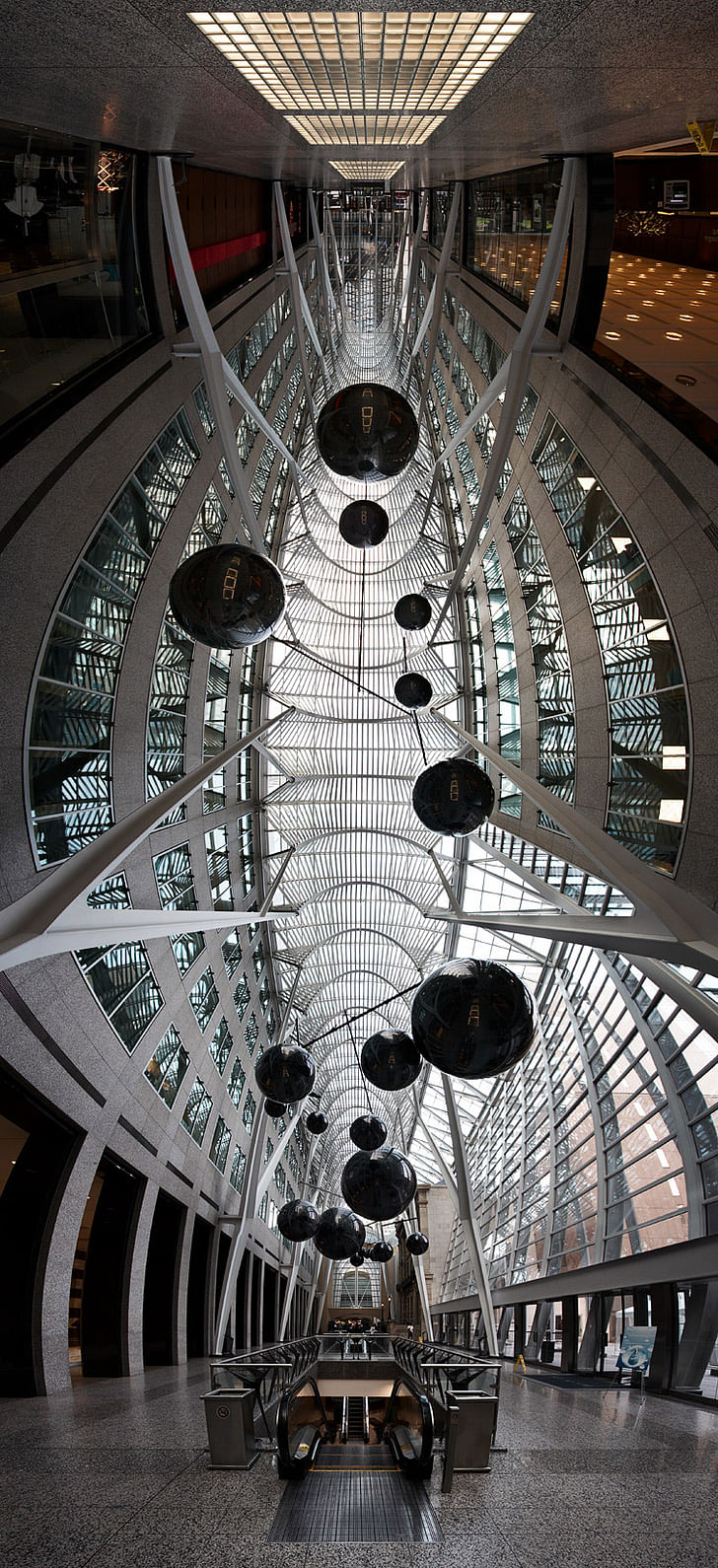


What are your thoughts about including people in your photos? Is it important to photograph a building in use, or by itself?
SJ: It really depends on the subject and the mood I'm trying to convey. Sometimes showing a structure alone with nothing else to distract is most powerful, and sometimes including people in the shot is what makes the photo.
A good example of that is the Jumping Girl photo that I shot in ROM's Crystal. I have a photo of the same exact interior with no people in it, and it has a completely different feeling and it doesn't have the same energy. If I have the luxury of shooting the photos with and without people and choosing later I try to do that. In my opinion, this is a major decision in architecture photography and its importance is often overlooked.


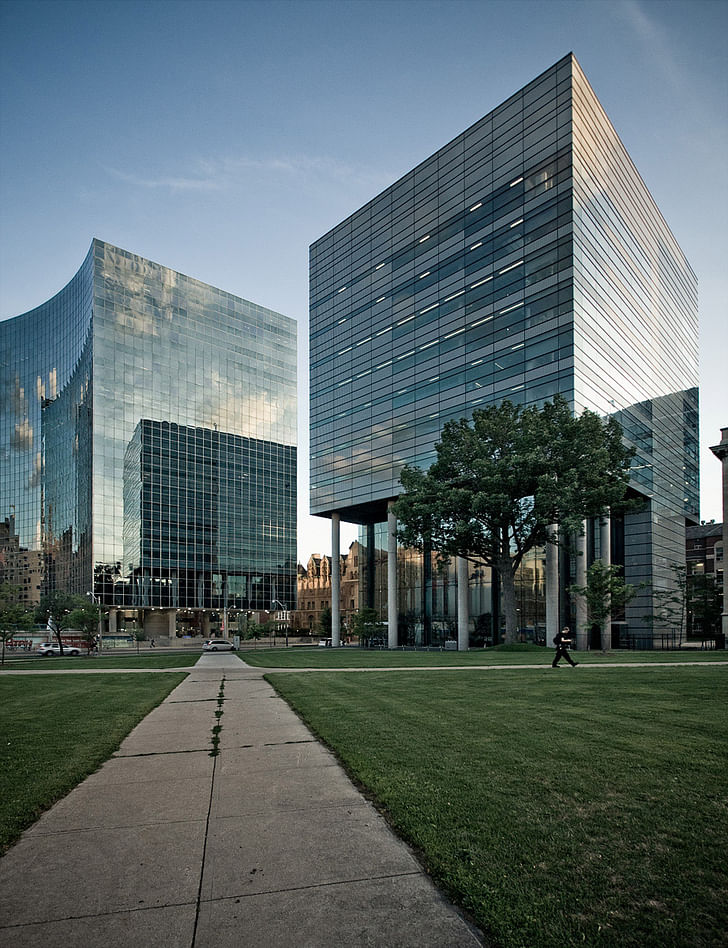
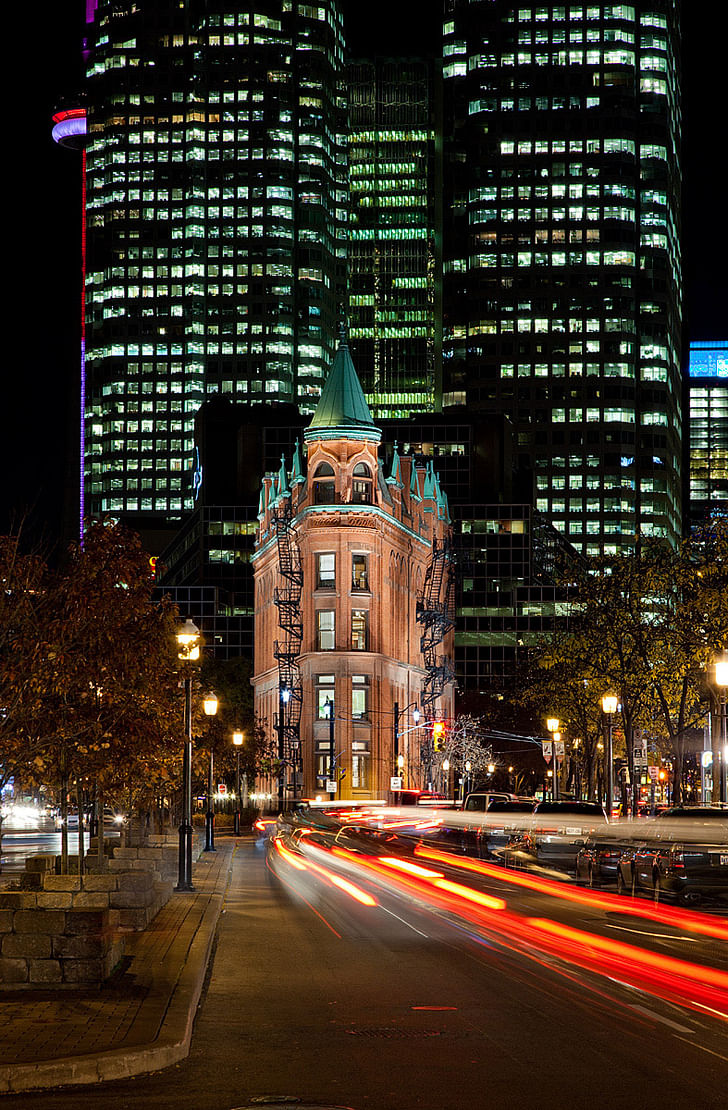

What are your favorite pieces of equipment?
SJ: At the moment, my favorite camera body is my Canon 5D Mark II, and as far as lenses go, the wider I can go the better. I have a Sigma 12-24 lens which is great, but for more serious jobs, I usually rent prime lenses, like the Canon EF 14 f2.8 L. Depending on the assignment, I use tilt-shift lenses, mostly the Canon 17mm TS. For panoramic shots, I use a Nodal Ninja pano head.
As my walk around camera, I use Panasonic's GH2 and/or GX1, with a Lumix 7-14mm lens which is an excellent and compact combo.
Do you work alone?
SJ: Yes. I mostly work alone, and the way I work, I'm more comfortable that way.

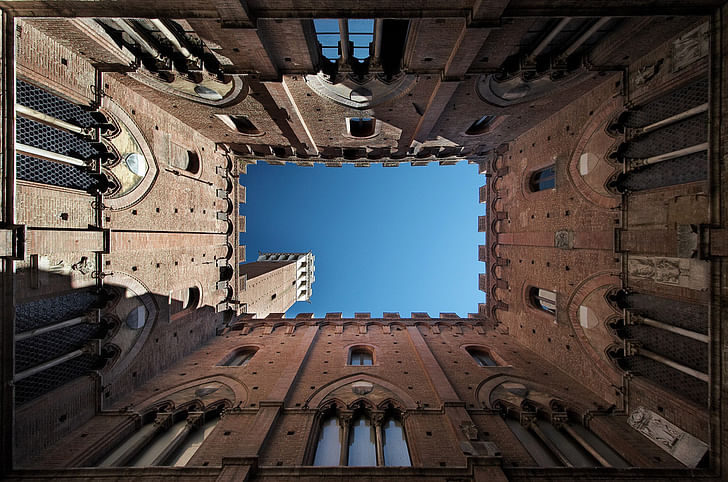

How do you feel about seeing your photographs on blogs and websites?
SJ: I'm used to it and I have no problems with it. I've been posting my photos online since 2003, and although my images have been stolen many times, I still think the exposure you get from showcasing your work is very much worth it. Obviously when people post your photos without your permission or without including proper credits, it's upsetting, but when you choose to post your work online, that's one of the unfortunate dangers, but in my opinion is outweighed by the positive exposure of your work.
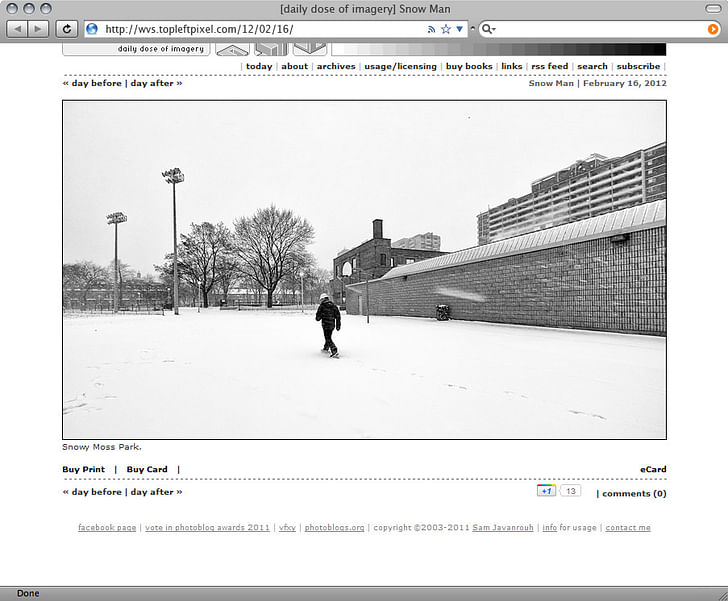
Sam Javanrouh:
Sam Javanrouh is the man behind one of the most popular photoblogs in the world. Born in Tehran, he moved to Toronto in 1999 and four years later started posting a new photo every day to his site Daily Dose of Imagery. Since then, it has almost taken on a life of its own. He has won numerous awards including Photoblog of the Year at the Photobloggies and Best Photoblog in Toronto by readers of this site.
His photos have been featured in many publications and have been featured in numerous online resources.
No Comments
Block this user
Are you sure you want to block this user and hide all related comments throughout the site?
Archinect
This is your first comment on Archinect. Your comment will be visible once approved.